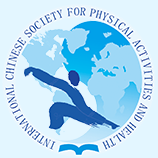Document Type
Abstract
Publication Date
2-2024
Abstract
Purpose: Researchers have found that the core and combined symptoms of autism spectrum disorder (ASD) negatively influence the health-related quality of life (HRQoL) of autistic children and their parents. Although it is supported that participation in physical activity (PA) can enhance the HRQoL and well-being in general, few studies have addressed the relationship between HRQoL with PA in the population with ASD. This study examines how much leisure-time physical activity participation is correlated to HRQoL in parent-child dyads with ASD. Method: Participants were recruited from two Rehabilitation Centers for neurodevelopmental disability children. Eighty-five ASD children and their parents participated in this study. HRQoL for ASD children and their parents was measured with the World Health Organization Quality of Life short form (WHOQoL-26) and the Pediatric Quality of Life Inventory 4.0 (PedsQL 4.0, parent-report version) respectively, while leisure-time PA participation of both children and parents was assessed using the Godin Leisure-Time Exercise Questionnaire (GLTEQ). We first confirmed the psychometrics of the WHOQoL-26 and PedQL 4.0 and then analyzed the relationships between different levels of PA and HRQoL in dyads. Results: Descriptive statistics showed that 30.6% of ASD children (Mage=5.25±1.48; 85.9% boys) and 42.4% of their parents (75.3% between 31-40 years; 73 mothers and 12 fathers) were insufficiently active. For parents of children with ASD, the physical domain of HRQoL had a small positive correlation with light PA (r=0.27, p=0.013) while the psychology domain had a small to moderate positive correlation with moderate (r= 0.23, p=0.04), light (r=0.3, p=0.006), and total (r=0.23, p=0.032) PA. Also, the environment domain of HRQoL had a small positive correlation with moderate (r=0.28, p=0.011) and light (r=0.32, p=0.003) PA. Concerning ASD children, the physical domain of HRQoL had a small to moderate positive correlation with moderate (r= 0.24, p= 0.027) and total (r= 0.32, p= 0.004) PA. Furthermore, there were several interrelationships between parent-child dyads’ PA and parent-child dyads’ HRQoL. ASD children’s social domain in HRQoL was correlated to their parents’ light PA (r=0.25, p=0.021) whereas parents’ environment domain was correlated to their children’s mild PA (r=0.24, p=0.03). Conclusion: There are significant relationships between PA and HRQoL for both children with ASD and their parents. Particularly, the parent-child dyads’ HRQoL may benefit from each other’s leisure-time PA involvement. Due to ASD children’s restricted daily PA norm and their parent’s challenging caregiving environment, the designation of effective PA enhancement strategies may enhance the quality of life in both children with ASD and their parents.
DOI
https://doi.org/10.18122/ijpah.3.1.40.boisestate
Recommended Citation
Song, Yu and Shen, Bo
(2024)
"A153: The Relationships Between Physical Activity and Health-Related Quality of Life in Parent-Child Dyads with ASD,"
International Journal of Physical Activity and Health: Vol. 3:
Iss.
1, Article 40.
DOI: https://doi.org/10.18122/ijpah.3.1.40.boisestate
Available at:
https://scholarworks.boisestate.edu/ijpah/vol3/iss1/40
Included in
Exercise Science Commons, Health and Physical Education Commons, Public Health Commons, Sports Studies Commons



